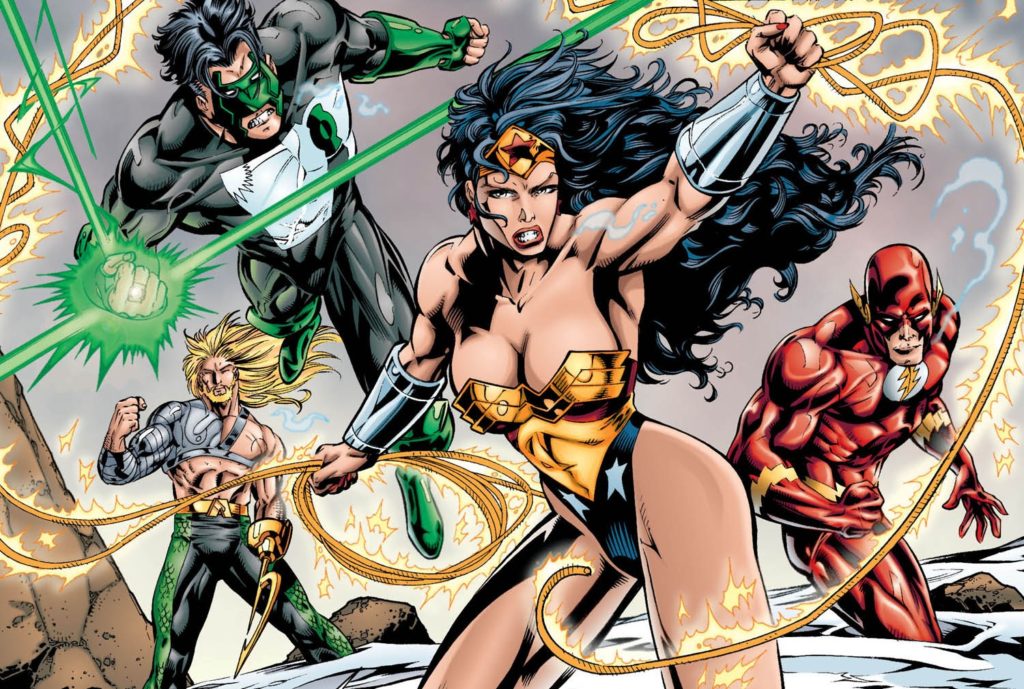Writing Justice League comics is one hell of a task. Think of all of the planning that went into making the Avengers movies congruent with the heroes' solo outings - for team-up comics, writers have to do that every month. This would have been particularly hard in the 1990s, when it was a trend for characters to go through radical changes. While JLA was on the stands, Superman transformed into a being of pure energy, Wonder Woman died in battle, and Flash was briefly replaced by his counterpart from an alternate timeline - events all occurring in the pages of other books. Luckily, comic legend Grant Morrison and talented guest writers like Mark Waid were at the helm of JLA during this era, embracing it to craft what is perhaps the definitive edition of the team.
The first thing Morrison did on JLA was restore the team to its original Silver-Age line-up. Prior to this the League had featured lesser-known characters, but now it consisted of the biggest names in DC. These seven heroes were depicted as a modern-day pantheon of the gods, capable of incredible feats such as wrestling with higher-dimensional beings, travelling at unquantifiable speeds and thinking up genius plans to overcome the impossible.
Heavy-hitters need to face big threats, and JLA doesn't pull any punches. Despite being called the Justice League of America, they aren't just fighting to save their country, they're preventing the end of the very universe. Each story feels as big as any "world-shattering" event we see in comics today, and Morrison's final arc nearly rivals even the seminal Crisis on Infinite Earths in terms of magnitude. You know they're always going to win before you open the book, but Morrison's writing convinces you every time that reality is falling apart, and not even the Justice League can hold it together.
JLA mostly focuses on being large-scale, weaving together complex subplots into a huge epic, but this doesn't mean it throws the small things aside. Each character develops over the course of the story - younger heroes Kyle (GL) and Wally (Flash) step out of their predecessors' shadows and discover what they are capable of, J'onn (Martian Manhunter) learns what it means to be human and Arthur (Aquaman) sees the value of working as a team. Even the trinity grow during this run, as they deal with the responsibility of leading the world's greatest superhero team. By issue #5, they decide to expand their ranks, and the new additions get plenty of development too. Some of the greatest character moments in DC history occur in JLA - it's incredible how Morrison can balance so many heroes.
Writing, however, can fall flat without decent artwork, especially in an action blockbuster like JLA, so it's a good job that Howard Porter illustrates most of the issues. You can feel how powerful the characters are just by looking at them, and Porter is a master of conveying motion and impact. It's perfect for a fan of cinematic and animated fight scenes, as it feels like you're watching a film rather than looking at static images.
If you want to see why so many fans consider the Justice League to be the greatest superhero team of all time, look no further than the nineties JLA comics. With an all-star line-up, larger-than-life stories, iconic moments and dynamic artwork, it's the best the League has ever been.
Rating: 8.5/10
For the best of JLA, read volumes 1-4, the Earth 2 graphic novel, and the DC One Million miniseries. Available in print and on Comixology.




Comments
Post a Comment